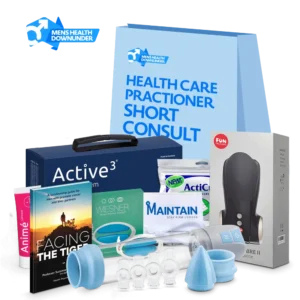Erectile dysfunction (ED or impotence) is the inability to get or maintain an erection that allows sexual activity with penetration. Unfortunately ED is relatively common and affects up to 50% of men aged 40 to 70 years. It is worth noting that ED is not a disease, but generally a symptom of some other problem, be it physical, psychological or a mixture of both. You shouldn’t worry about an occasional failure to get or keep an erection as this is generally normal and may be related to drinking too much alcohol, anxiety and tiredness. In cases where it is ongoing the cause should be investigated by your Doctor. There are many possible causes and equally many treatments that your Doctor can prescribe to meet your needs including oral medications (usually tablets, lozenges or liquids), vacuum erection devices, injections directly into the penis, gels for intraurethral injection, penile prosthetic implants and counselling.
There are many causes of ED. It was thought that ED was mainly caused by psychological factors, such as anxiety or depression. In reality only 1 in 10 patients suffer ED as a result of psychological factors. The majority of ED cases are related to something physical or anatomical, illness (such as diabetes, high blood pressure, high cholesterol, MS and other conditions which affect the nerves), post surgery (lower abdominal such as prostatectomy, gastro-intestinal or radiation treatment), medication related (of which there are many) or lifestyle related (smoking, alcohol consumption, being overweight). ED generally develops over a period of months or years and results in a gradual loss of function.
It is also worth noting that a man’s sexual drive or performance can be affected by stress. Stress from problems at work, relationship difficulties or financial worries, feeling depressed and anxiety about poor sexual performance can be involved in a failed erection; this then become a vicious circle and can result in ongoing erection issues. This is where counselling can be very effective.
With respect to treatments there are many options available. These include:
- Review of, and where needed, changes to your prescription medications if they are identified as a possible cause (antidepressants, antipsychotic medications, blood pressure medications and medications for BPH are often culprits). The pharmacists at Men’s Health Downunder are able to review your medications to help identify possible culprits
- Psychotherapy and counselling
- Oral medication including Viagra, Cialis and Levitra - these are proprietary products and are generally available at all pharmacies. They are very effective but do have some specific side effects and instructions for their optimal use - particularly around onset of action and if they should be taken with or without food
- Sub-buccal medications are something that we are seeing grow in popularity - these are very similar to the oral medications listed above but tend to work more effectively. They are specially compounded by Men’s Health Downunder on your Doctor’s prescription and allow greater customisation. Your Doctor can sign up to Men’s Health Downunder to access our list of commonly prescribed lozenge formulations and to get further clinical information and support
- Vacuum erection devices - are drug free and tend to create a reasonable erection adequate for penetration. For men who can not take oral medications these devices are a good option and work by increasing blood flow to the penis
- Injections directly into the penis such as Caverject Impulse (intracavernosal injections) - these are very effective even for men who have suffered significant damage to the nerves involved in getting an erection
- Penile prosthetic implants which are more invasive and done after consultation with a Urologist
It is important that the first approach is to treat the underlying cause of ED if one has been identified. Where an underlying cause can not be identified or the cause can not be resolved, generally the oral or sub-buccal treatments are used to promote a better/stronger erection either with or without a vacuum erection pump.
Oral and Lozenge Medication Overview
Oral medications, otherwise known as PDE5i (phosphodiesterase type 5 inhibitors), are the mainstay of erectile dysfunction treatment and management. They are relatively effective, convenient, side effects are not common and they are accessible with a prescription from your doctor. There are 3 propitiatory PDE5i available in Australia; these include brands such as Cialis (tadalafil), Viagra (sildenafil) and Levitra (vardenafil). Lozenges containing PDE5i are used sub-buccally, meaning that they are placed between the teeth and the cheek and gentle sucked on until they dissolve. These are less commonly seen in Australia as most Doctors are unfamiliar with them despite their advantages over the propitiatory oral tablets listed above. Lozenges are custom made for each individual according to their Doctor’s prescription. This is done to achieve the best possible outcome for patients. Further, it allows a more tailored approach to be utilised. There are a number of benefits to using PDE5i in the sub-buccal form and these will be explored below. As a note, formulas and suggested combinations and dosages have been compiled by Men’s Health Downunder over many years and are available to Doctors through the Doctor login section of this website.
The main benefit of the sub-buccal lozenges include:
- They allow your Doctor to prescribe a customised option, that being multiple types of ED medications in one lozenge
- Use of the sub-buccal route of administration avoids hepatic metabolism. All PDE5i are extensively broken down by the liver, reducing their effectiveness when taken orally. This is avoided with lozenges, giving greater results
- The onset of action is faster meaning greater ability to have spontaneous sexual relationships
How do they work?
PDE5i inhibitors help the body's natural response to sexual stimulation. They block an enzyme that breaks down the chemical messenger responsible for creating an erection - cyclic GMP (cyclic GMP is created from GMP when nitric oxide in the blood enters the smooth muscle of the penis and this is what causes an erection) - hence cyclic GMP stays in the smooth muscle for longer, which means more erection. So really, these PDE5i do not cause erections, but they help the body's normal response to sexual stimulation, assisting in the formation of an erection.
As a rule this group of medications is generally used ‘on demand’ and work quite well. For patients post prostate surgery they tend to be quite ineffective as their blood flow and nerve connections have been interrupted. This is why we generally use the injectable PDE5i contained in medications like Caverject and Trimix to give an erection as they do not rely on blood flow alone to elicit their effect.
PDE5i in prostatectomy patients
In patients post prostatectomy we use oral PDE5i inhibitors at low doses to increase blood flow to the penis. This will not likely result in an erection as the doses used tend to be lower than that of the ‘on demand’ doses used to aid sexual function. The other benefit of low dose PDE5i is that they will assist in keeping the blood vessel lining (the endothelial lining) healthy which is vital in getting oxygen from the blood into the penis tissue keeping it alive and functional. Generally a small dose of Viagra (sildenafil) or Cialis (tadalafil) might be used - 25mg Viagra or 5mg Cialis. The main benefit of tadalafil in this situation over sildenafil (or Levitra - vardenafil) is that it remains in the blood longer, having an effect for more than 24 hours, where the others are only effective for 4-8 hours. This is important because we want to infer the aforementioned benefits for the penis 24 hours a day to get the maximum benefit. The drawback of tadalafil is its cost compared to sildenafil and this may need to be taken into consideration.
Side effects
Common side effects include facial flushing and a blocked or runny nose. They can also cause headaches, muscle aches and pains, and indigestion. Most side-effects are not troublesome and only last an hour or so. In the case of taking low dose tadalafil every day post prostatectomy, muscular ache (back, neck or thight most commonly) is the most commonly seen side effect and it is seen in approximately 1% of the population. There are many ways to work around these side effects so please don’t hesitate to contact us if you need assistance in this regard.
When not to take PDE5i
PDE5i are not to be used with ‘nitrate' drugs. These ‘nitrate’ drugs treat certain forms of heart disease - if you are not sure check with your Doctor or Pharmacist. Further, PDE5i should not be used if you suffer from unstable heart disease, which should again be checked and discussed with your Doctor or Cardiologist.
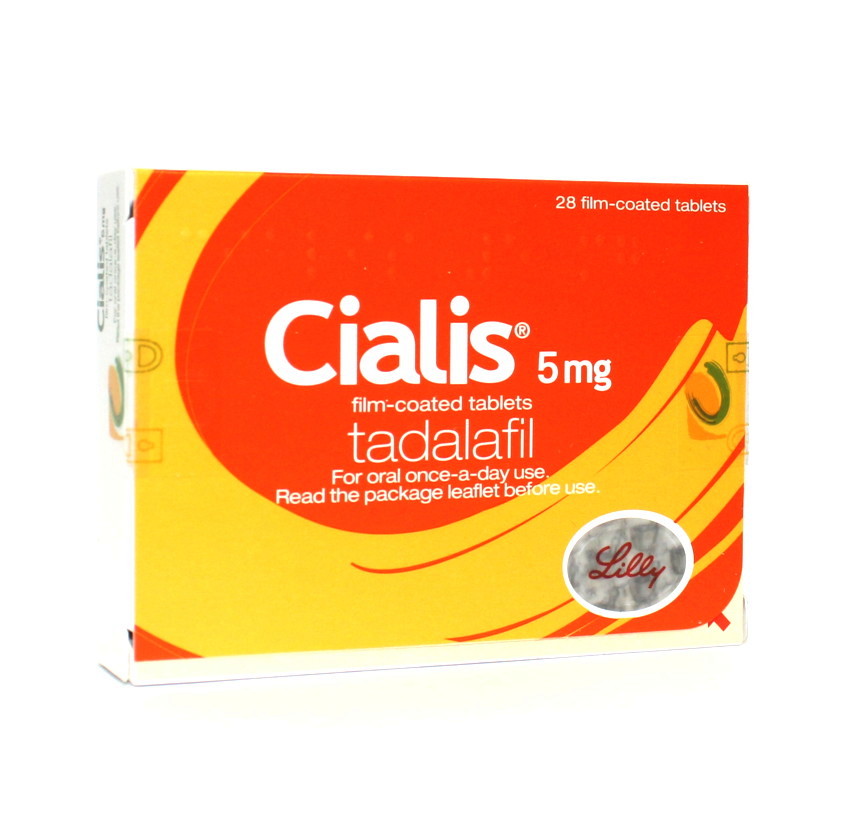
PDE5i Drug example - Cialis

PDE5i Drug example - Viagra 100mg
Intracavernosal (penile) injections overview
Your Urologist or Doctor may prescribe erection drugs which are injected into the penis. These are known as an intracavernosal injection. These medications are often used to bypass the oral route of administration. This can be for a number of reasons such as side effects of oral medications, poor outcome of oral equivalents, drug interactions, impaired blood flow and so on. Despite the fact that injections can be uncomfortable (and certainly unnatural for most patients) they are very effective and with the correct dose and technique will be reliable.
The 2 most commonly used medications for penile injection are Caverject (alprostadil) and Trimix, a mixture of 3 ingredients: alprostadil (PDE5i), phentolamine (alpha blocker), and papaverine (vasodilator). These ingredients work by relaxing the smooth muscle and opening the blood vessels in your penis, thus leading to an erection.
Caverject is a propitiatory injection made by Pfizer which is available at most pharmacies (some may need to order it for you).
Trixmix comes in a range of strengths and is specially compounded by a sterile compounding Pharmacy. Because each batch is made to your specific prescription, Trimix needs to be specially ordered each time you need it. Men’s Health Downunder Pharmacists can arrange this for you - please get in touch and we will be happy to arrange it for you and teach you how to use it safely and effectively.
Your Urologist/Doctor will decide which medication and dose is most appropriate for you and provide you with a prescription.
Storing your medication
The alprostadil in Trimix can weaken over time, so Trimix should be stored in the refrigerator and away from light. This will keep the medication stable for a few additional months. If you’re using Caverject the unused syringes can simply be kept at room temperature.
If you have been prescribed Bimix or papaverine alone, you can keep these medication vials at room temperature as they do not contain the light and temperature sensitive alprostadil.

Caverject Injection Labelled
Intracavernosal injections are generally reserved for patients who do not achieve the desired results with an oral or subbuccal PDE5i (e.g. Viagra or Cialis). These medications are injected into the cavernosal tissue of the penis and work quickly and reliably to give a good firm erection within 10-15 minutes. The main concern expressed by patients prescribed these injections is, not surprisingly, the idea of injecting into their penis. The information below may help to demystify the concept of intracavernosal injection. Men’s Health Downunder is here to assist you with any questions you have so don’t hesitate to contact us if you need support.
There are 2 main intracavernosal injections we use: Caverject (which is available on prescription from most pharmacies) and Trimix (which is specially compounded in accordance with your Doctor’s prescription). There are many formulations/strengths of Trimix and again, as with subbuccal lozenges, these formulas can be accessed by your Doctor in the practitioner section of our website. Generally, intracavernosal injections contain a PDE5i - most commonly alprostadil. You may use these injections up to twice a week (you should not use 2 injections within 3 days - and not more than 8 times in a month)
The goal is to induce an erection lasting 30-60 minutes; this can require some dose adjustment. Your Pharmacist or Doctor can advise on dose adjustment to ensure that you are able to find the best dose for you.
The erection should not last more than two hours, however if it does this is not cause for alarm, it's just not desirable from a patient point of view. An erection lasting more than 3-4 hours is known as Priapism. If this happens you should seek help as detailed in the ‘Priapism fact sheet’ below. Priapism can damage the penis and must be dealt with as soon as possible.
If the penis starts to bend/change shape it may be a side effect of the injections. If this does happen stop using the intracavernosal injections and seek advice from your Urologist/Doctor/Pharmacist. This is known as Peyronie’s disease and again is not desirable and needs to be managed by a healthcare professional. If you have Peyronie’s disease you should not use intracavernosal injections.
Incorrect technique may result in a partial erection or no erection. This does not cause any harm. You can try again on a different day if this occurs and if you are unsure if your technique is correct check with your Pharmacist or Doctor. Inappropriate technique is the greatest cause of a failed injection and is easily corrected with a little bit of help from your Pharmacist. Men’s Health Downunder pharmacists are all specially trained to assist you with your injection technique. Contact us if you need any assistance.
When using intracavernosal injections it is always wise to avoid alcohol as alcohol may counteract their effects, resulting in no, or only a limited, unsatisfactory response. Alcohol may have this effect with any medication used for erectile dysfunction (tablets or injections) and as a general rule should be avoided.
To achieve the best response, you should be relaxed, sexually aroused (either from contact with a partner or from self-stimulation) and not overly tired; this is easier said than done so try your best.
The erection can be uncomfortable and should this occur simple analgesics are recommended e.g. Panadol. for more information see the ‘Priapism fact sheet.'
If you find the injection painful, application of a local anaesthetic cream may be appropriate; we would typically recommend Emla or Numbit 5% which should be applied an hour before and covered with a little spot bandaid - ask us for further advice.
Finally some patients prefer to use a device called Inject Ease or Autoject to assist them with injection of Trimix. This is not appropriate for use with Caverject. Your Men’s Health Downunder Pharmacist can supply you with, and explain how to use the Inject Ease or Autoject device.
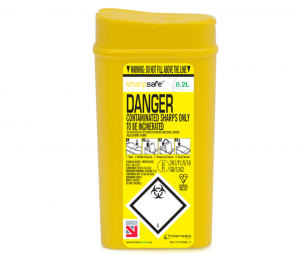
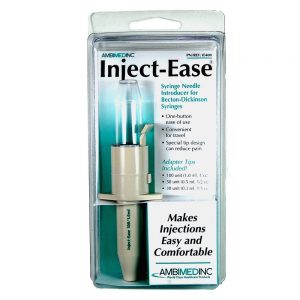
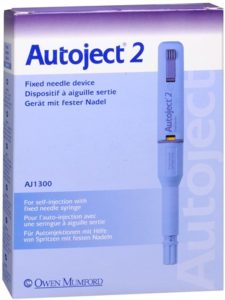
The below instructions are to assist patients or their carers to administer an intracavernosal injection.
Do not use the medication if it has particles visible in it or it is cloudy. Do not use if the rubber stopper comes off of the vial
Preparing the Injection
- Prepare a clean surface for your supplies.
- Gather your supplies including: medication vial, syringe (single use only), alcohol wipes, sharps container
- In the case of Caverject Impusle follow the instructions or video given to you
- Wash your hands well with soap and water
Drawing Up the Medication From the Vial
- Open an alcohol wipe and wipe the rubber stopper on the top of the vial. You must always wipe the rubber stopper with alcohol before you insert the needle. This will kill any bacteria on the rubber stopper
- Take out the syringe and remove the cap from the needle. Be very careful not to let anything touch the needle. If anything touches the needle, you must throw the entire syringe away into the sharps container and use a new one as it will no longer be sterile
- Holding the syringe upright so the needle faces the sky, pull the plunger of the syringe back past the dose you are going to inject. Next, push the plunger back up until the top of the plunger (the thin black line closest to the needle) is at the dose you are going to inject
- Turn the syringe downward so the needle is facing the floor. Hold the syringe in your hand like you would hold a pen or dart. Hold the syringe close to the needle with your thumb, index (first) and middle (second) fingers. This will keep the needle from bending as you insert it into the rubber stopper. Support the medication vial with your other hand
- Holding the vial upright and the syringe downward, insert the needle through the circle in the centre of the rubber stopper. Push the plunger down to inject the air into the vial (see Figure 1). This is done because the vial is pressurised. You must replace the amount of medication you remove from the vial with air
- Turn the vial and syringe upside down (see Figure 2). Hold the syringe with your dominant hand and the vial with your other hand. Don’t let go of the vial, or the needle will bend. Make sure the tip of the needle is in the medication. Rotate the syringe so you’re looking at the numbers and lines on the syringe
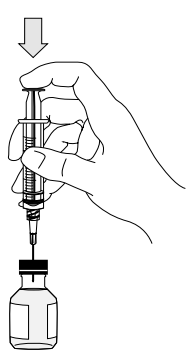
Figure 1. Injecting air into the vial
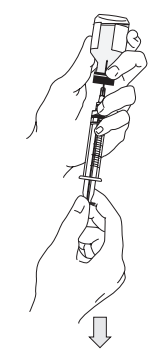
Figure 2. Withdrawing the medication
- Pull the plunger down past your prescribed dose. This will help remove any air bubbles. Slowly push the plunger back up to your prescribed dose. Check the amount of medication in the syringe to make sure you have drawn up the correct dose
- Check for air bubbles in the syringe. If you see any air bubbles, pull more medication into the syringe. The bubbles will move to the top, towards the needle. Slowly push the air bubbles and the extra medication back into the vial. Look at the syringe again to make sure that you have the right amount of medication
- When you have the correct amount of medication drawn into the syringe, pull the needle out of the vial. Place the cap back on the syringe without touching or bending the needle. If you touch or bend the needle, you will need to throw away the syringe and start at step 2. When you place the cap back on the syringe, make sure you don’t push the plunger by accident. This will push the medication into the cap and result in the wrong amount when it’s time to inject yourself
- If you’re using Trimix, put the medication vial back into the refrigerator. If you’re using Bimix or Papaverine, you don’t need to keep your medication in the refrigerator
Choosing an injection site
You must inject the medication into a specific area of your penis. This is so you don’t inject into a nerve or blood vessel
Imagine that your penis is divided in 3 parts. You will give the injection in the middle third of your penis at the 10 o’clock (left side) or the 2 o’clock (right side) position (see Figure 3)
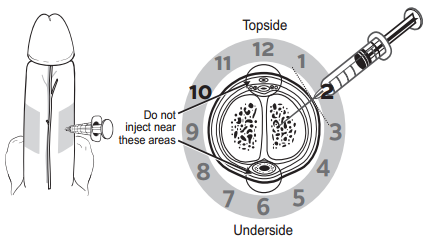
Figure 3. Choosing an injection site
To prevent trauma to your penile tissue, always change sides of your penis each time you inject the medication (right side, then left side). Keep a record each time so you don’t forget. Don’t inject into any vein you can see or feel because it could cause a large bruise on your penis. Don’t inject straight down into the top or the bottom of your penis.
Injecting the medication
- Grasp the head of your penis, not the skin. This will allow your penis to be fully stretched. It’s easiest to inject if your penis is pulled straight out in front of you. If you aren’t circumcised, pull your foreskin back before grasping the head of your penis. This will prevent the needle from going between the skin and cavernosal tissue. For your injection to work, the medication needs to go into the cavernosal tissue
- Locate the area to be injected (the middle third of your penis). Wipe it with an alcohol wipe. Let go of the head of your penis and pick up the syringe with 2 hands
- Remove the cap covering the needle. Look at the syringe to make sure the dose is correct and you haven’t pushed any medication out by accident
- Hold the syringe between your thumb, index and middle fingers like a pen or a dart. The needle should be facing the floor. Don’t place your index finger or thumb on the plunger
- Once again, grasp the head of your penis and pull it straight out. Keep pulling on your penis from the time the needle goes into your penis until it comes out. Don’t twist your penis as this could cause you to inject into the wrong area
- Touch the needle to your skin then allow it to slide into the shaft of your penis. Remember to avoid any veins. Make sure to insert the needle at a slight angle (either the 10 o’clock or 2 o’clock position, as shown in Figure 3)
- Move your finger so that your index finger or thumb can push down the plunger
- Push down on the plunger to inject the medication into the shaft of your penis. Be careful not to pull the syringe out as you’re injecting the medication
- Once you have injected all of the medication, quickly pull the needle straight out of your penis. Pull it out straight. Don’t use a twisting or jerking motion because this may cause bruising. Apply pressure at the injection for 30 seconds (slightly longer if you are on a blood thinner as this will help to decrease any bleeding or bruising) then massage the penis from the base to the tip approximately 5-10 times; The penis should become erect (with the assistance of foreplay) in 5-20 minutes
- Place the syringe in the sharps container. You don’t need to recap it
Research shows that vacuum therapy is a highly beneficial method of rehabilitation therapy following radical prostatectomy.
The goal of penile rehabilitation therapy after radical prostatectomy is to get good, regular blood flow into the penis. This aids in preventing atrophy (death of the cells/tissue) of the penis. Beyond this you tend to find that regular use of the pump will also increase the length of the penis (noting a shortened penis post surgery) and maximise erectile function so that a spontaneous erection can be achieved.
Vacuum therapy does this by creating negative pressure around the penis, thereby increasing blood flow to the penis. When used as a treatment, the penile tube is placed over the penis, vacuum suction is applied and an erection induced. Once an erection is achieved, a silicone constriction band is placed around the base of the penis, holding the erection in place.
When using vacuum therapy for rehabilitation the pump is used in much the same way, except without the constriction ring. Negative pressure is applied to increase blood flow to the penis, however the ring is not used because it prevents venous outflow. Using vacuum therapy without the ring helps stimulate oxygenated blood flow, which can reduce the fibrotic changes that can occur after a radical prostatectomy.
We feel that it is important that patients invest in a quality, medical-grade pump designed for therapeutic use. It’s important at this juncture not to buy a “toy” or “novelty” pump, but to look for a quality instrument, backed by a solid reputation.
Sample routine
When using vacuum therapy for penile rehabilitation, the goal is to get blood to the penis and improve blood flow; this in turn helps to repair and maintain the penile tissue. A typical session involves the following steps:
- Apply vacuum suction and draw blood into the penis (you may need to lightly shave around the base of the penis and use a little water based lubricant)
- Leave the penis fully engorged in the pump for 5 minutes
- Remove the pump and let the penis return to flaccid for 1 to 2 minutes
- Repeat the vacuum suction and hold the erection for another 5 minutes. This should be done 2-3 times in a row. Alternatively you may wish to simply leave the pump over the penis for 10-15 minutes
Doing this repeatedly can increase blood flow, decrease swelling, and increase lactate and oxygen exchange.
Rehabilitation tips
- Wait two full weeks after your catheter is removed before beginning rehabilitation
- Be patient, be patient and be persistent. It is common to not get full engorgement for some days or weeks so don’t be dismayed and try not to become frustrated, this is normal and will improve with time
- Give yourself time to get familiar again with the sensation of being engorged. To do this, some men prefer to activate the pump for 30 seconds, and then rest for 30 seconds before activating the pump again. When starting your rehabilitation this ‘on/off’ process may be a gentle way to become acquainted with the process.
Step by Step Vacuum Therapy
-
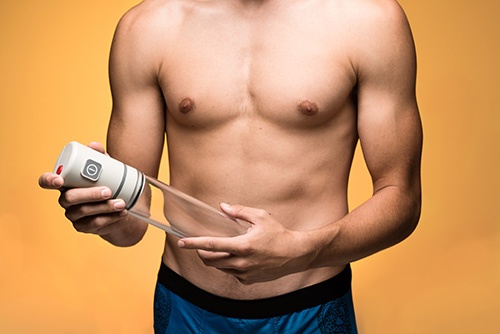
Step 1:
Attach the pump head to the penile tube. The pump head will look different depending on whether you are using a manual or battery operated system.
-
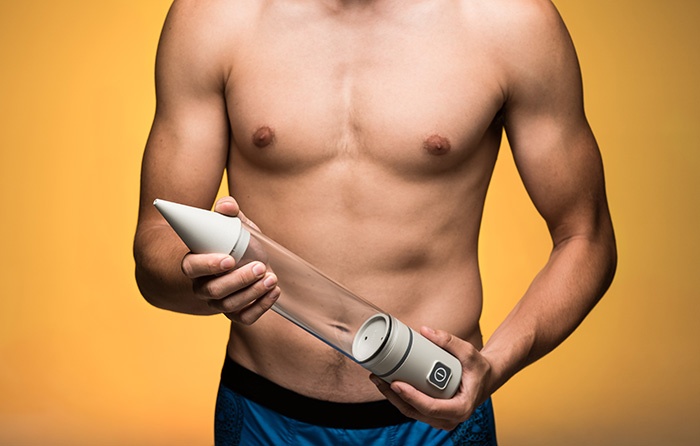
Step 2:
Place the loading cone on the other end of the penile tube
-
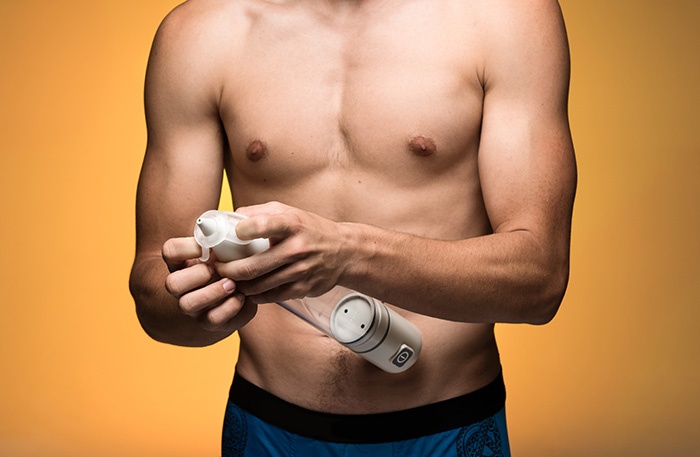
Step 3:
Slide a tension ring over the top of the cone and down just past the base of the cone, on to the edge of the penile tube.
For your first time, we recommend using the tension ring size that’s in the middle. If the ring is too tight, you can move up to a larger size. And if your erection doesn’t last as long as you’d like, you can move down to a smaller size.
To slide the tension ring down to the base of the cone, place the middle ring over the top of the cone and use the two handles to move it downward. Feel free to use lubricant if you need to.
-
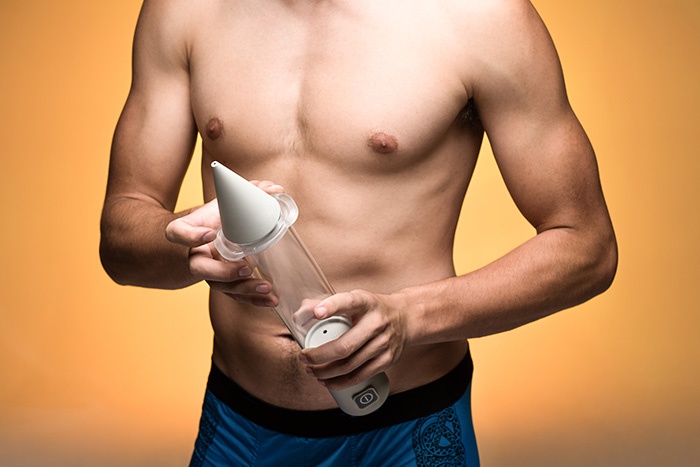
Step 4:
Once the tension ring is securely on the penile tube, remove the cone.
-
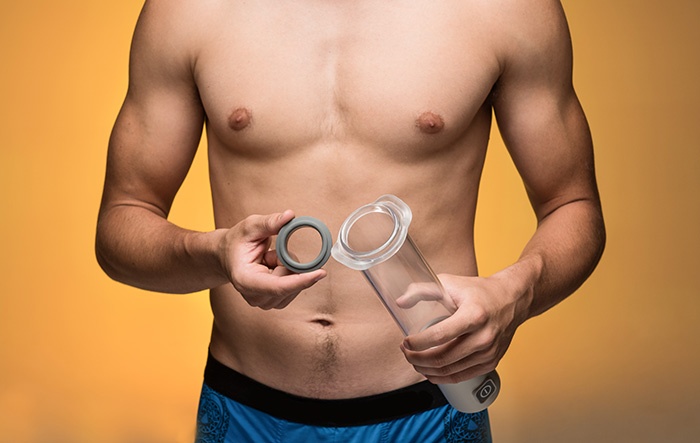
Step 5:
Insert the bushing into the same end of the tube from where you just removed the cone.
-
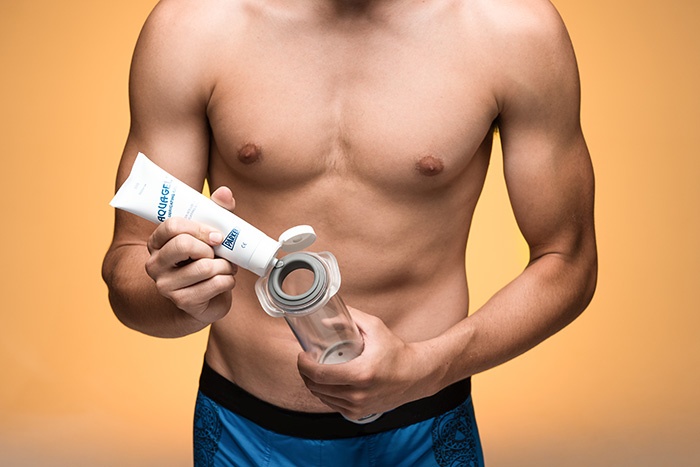
Step 6:
Apply lubricant to the bushing, the inside of the penile tube and the pubic area.
-
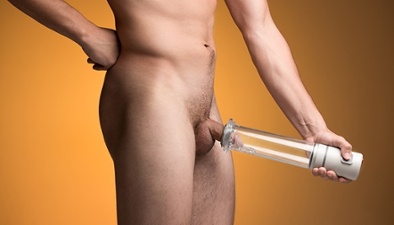
Step 7:
Place the lubricated end of the penile tube over your penis, being sure to hold the tube firmly to create a tight seal against your body.
-
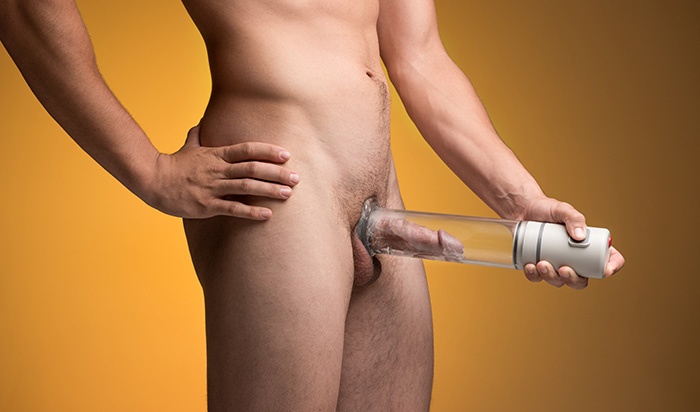
Step 8:
Begin engaging the pump. For motorised systems, press the red button. For manual systems, pull the handle. In both cases, the pump will begin drawing blood into your penis, forming an erection.
-
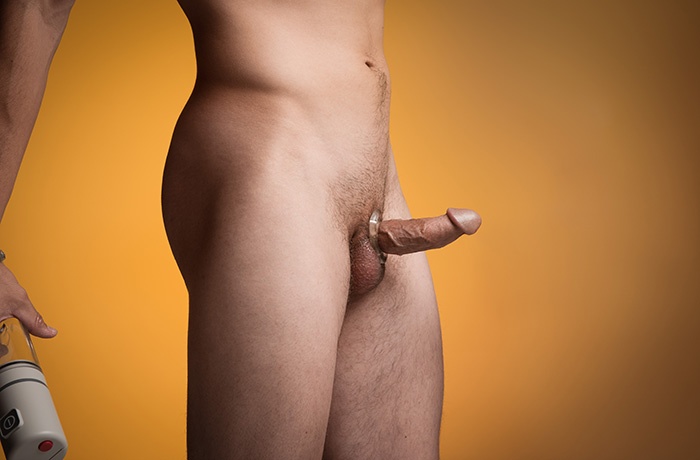
Step 9:
Once you’ve achieved the desired erection, slip the tension ring off the end of the penile tube and on to the base of your penis.
Step 10:
You now have a firm erection that will last for 30 minutes!
What is ejaculation?
Ejaculation is the release of semen from the penis at orgasm (sexual climax). When a man is sexually stimulated, the brain sends signals to the genital area through nerves in the spinal cord that make the pelvic muscles contract.
At orgasm, waves of muscle contractions transport the sperm, with a small amount of fluid, from the testes through to the vas deferens. The seminal vesicles and prostate contribute extra fluid to protect the sperm.
This mixture of sperm and fluid (semen) travels along the urethra to the tip of the penis where it is ejaculated.
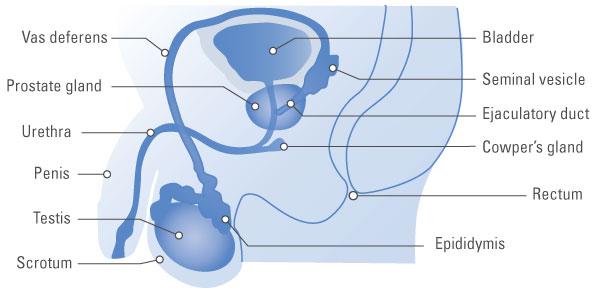
What is premature ejaculation?
Premature ejaculation happens when a man is unable to control the timing of ejaculation, and ejaculates before he and/or his partner is ready. This can causes distress.
How soon is too soon when a man prematurely ejaculates?
For a heterosexual man, a commonly used definition of premature ejaculation is ejaculating within about one minute of his penis entering the woman’s vagina. However, there is no fixed time for ‘too soon’. Premature ejaculation is a loss of control over ejaculation, and the distress it can cause to one or both partners, not just the time it takes a man to ejaculate.
How common is premature ejaculation?
Premature ejaculation is the most common male sexual problem and affects men of all ages.
Premature ejaculation is more common in younger men. This is because ejaculation generally takes longer as men get older and younger men may be less sexually experienced or feel less secure with the situation in which they are having sex.
Are there different types of premature ejaculation?
It is important to note that there are two types of premature ejaculation:
- lifelong, sometimes referred to as primary
- acquired, sometimes referred to as secondary
Lifelong premature ejaculation is when a man has not had control of ejaculation from the time of his first sexual experience. If left untreated, premature ejaculation will continue for the rest of his life.
Acquired premature ejaculation is usually when there has been a period of normal functioning before premature ejaculation began.
Acquired premature ejaculation is often linked to psychological (especially relationship) issues or other erectile problems such as erectile dysfunction.
What causes premature ejaculation?
The cause of premature ejaculation depends on whether premature ejaculation is lifelong or acquired.
Lifelong premature ejaculation can be caused by a chemical imbalance in parts of the brain, lowering the threshold for ejaculation. As these men need less stimulation, ejaculation can happen sooner than desired. Psychological problems, including performance anxiety, may be secondary to lifelong premature ejaculation rather than being the primary cause.
Acquired premature ejaculation is often caused by performance anxiety. The anxiety can be about sexual performance, fear of being caught in a sexual act or anxiety related to a specific situation, such as a new relationship. Some religious beliefs may also make a man feel anxious about having sex.
Acquired premature ejaculation can also be caused by problems such as erectile dysfunction. This may be because of the need for intense stimulation to get and maintain an erection or from anxiety about erectile problems.
Where to get assistance
There are many avenues to get help if you are concerned about premature ejaculation. These all start with a conversation with your General Practitioner. They will typically ask a number of questions to identify the cause and therefore allow them to refer you for counselling and/or provide a prescription for medication. We tend to find that the medications are effective however it can take some tinkering to get the dose correct.
As a side note, we recognise that as tempted as one may be to turn to the the late night TV ads or the internet for treatment, it is always best to speak with your family Doctor first. There are many products out there that can be purchased which promise results, however in practice they offer unsuspecting patients very little in the way of benefits. Some may in fact be unsafe and can interact with other medications you may be taking. If in doubt please contact us for further advice.
There are a number of other ejaculation issues that men can encounter. These may include:
- Retrograde ejaculation - this occurs when the muscle at the opening of the bladder does not close normally. This allows semen to flow back into the bladder, meaning little or no semen is discharged from the penis during ejaculation. The first urination after sex looks cloudy as the semen has mixed with the urine. Retrograde ejaculation is uncommon and usually harmless. It can be a side effect of a number of medications, particularly those used to treat benign prostatic hyperplasia (aka BPH) and those for high blood pressure. Health conditions such as diabetes, multiple sclerosis, and spinal cord injury can also cause retrograde ejaculation
- Delayed ejaculation - sometimes referred to as anorgasmia, are the terms used to describe the inability to ejaculate at will. Interestingly “orgasm” and “ejaculation” are often thought to be one and the same, but some men can experience orgasm even though they don’t ejaculate and this is common after prostate surgery. Other causes can include spinal cord injury, major lymph node surgery, diabetes, multiple sclerosis and traumatic injury to the pelvic region where nerves have been affected. Medications can also be implicated and the most common of these are the SSRI antidepressants (note: SSRI antidepressant medication may be prescribed by your doctor to treat premature ejaculation)
- Painful ejaculation - occurs when painful, burning sensations are felt during or following ejaculation. During ejaculation, pain can be felt in the perineum (the area between the anus and the genitals) and the urethra (the tube that runs from the bladder to the end of the penis). The condition can cause discomfort in the testes and interfere with sexual pleasure. Any condition that causes inflammation or an infection of the organs involved in ejaculation or the surrounding structures, such as prostatitis, may cause painful ejaculation. A referral to a urologist may be needed in the case of painful ejaculation
Priapism is a prolonged erection of the penis. Priapism generally continues for hours beyond the desired time (by definition this is at about 4 hours). Priapism is usually painful.
Priapism symptoms vary depending on the type of priapism. The two main types of priapism are ischemic and nonischemic priapism. As ischemic priapism is the most common form we will discuss it below. Nonischemic priapism generally occurs as a result of trauma and requires urgent medical treatment in a hospital.
Ischemic priapism
Ischemic priapism, also called low-flow priapism, is the result of blood not being able to leave the penis. It's the more common type of priapism. Signs and symptoms include: Erection lasting more than four hours or unrelated to sexual interest or stimulation; rigid penile shaft, but the tip of penis (glans) is soft; progressive penile pain. This type of priapism may be experienced when using intracavernosal injections such as Caverject or Trimix.
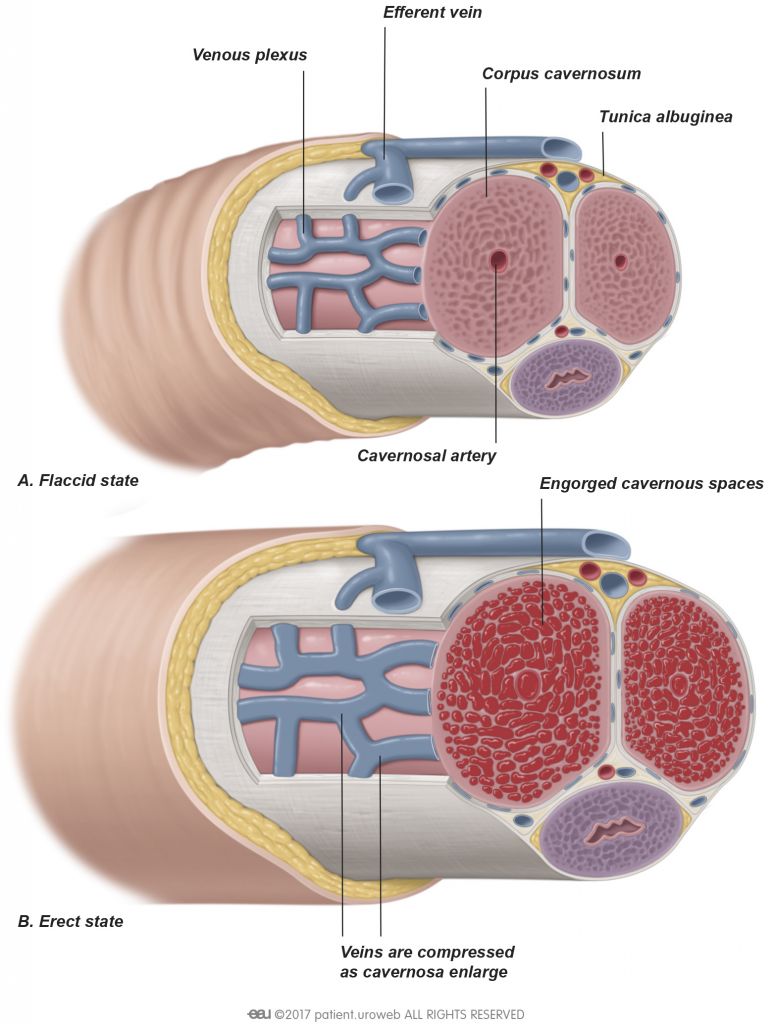
What you can do at home
In the case of a very painful erection or an erection that is becoming prolonged (your definition of this may vary but as a rule greater than an hour) you can take the following measures to both reduce the pain and assist the outflow of blood from the penis:
- Take simple analgesia - paracetamol tends to work reasonably well for pain management at the recommended dose
- Cold compression/ice pack/frozen peas - this will work quickly as it is applied directly to the penis. This will aid in resolving the erection
- Take a cold shower - in a similar fashion to the ice, a cold/cool shower will encourage blood flow from the erect penis.
- Pseudoephedrine - this medication is more commonly used to treat cold and flu symptoms, particularly a blocked or runny nose. In this instance it will aid in the blood flow from the erect penis, resolving the erection. If you are using an intracavernosal injection (Trimix or Caverject) it would be advisable to have some pseudoephedrine at home just in case. Take 1-2 tablets (60-120mg pseudoephedrine.) It will take 30 minutes to start working (hence using the ice/cold shower in the first instance is a good idea). NB - in Australia pseudoephedrine is kept behind the counter at the Pharmacy and you will need to provide your photo ID to purchase it. Ensure you get a straight pseudoephedrine product as it is often combined with other ingredients to treat cold symptoms that are not relevant to treating priapism.
- Intracavernosal injection of phenylephrine - this works like pseudoephedrine but is injected into the erect penis, allowing it to work faster. Men's Health Downunder can assist with the supply of ICI phenylephrine. It will require a prescription from your Doctor. We can assist your Doctor if they are unsure.
When to seek help
If you have an erection lasting more than four hours, you need to go the the Emergency department of the nearest hospital. The Emergency department staff are very understanding, discrete and professional and generally with only a short wait (the Emergency department triage priapism as a preference) the Doctor will determine the best course of action for a quick and safe result.
As a note
Alcohol, marijuana, cocaine and other illicit drug abuse has been implicated in priapism, particularly ischemic priapism. It would be wise to avoid these substances when using intracavernosal injections to reduce the risk of adverse effects.
The development of fibrous scar tissue inside the penis causing a curved and/or painful erection is know as Peyronie’s disease. The exact cause of Peyronie’s disease is not completely understood. As you would be aware, men’s penises vary in shape and size, and having a slightly curved erection isn't necessarily a cause for concern. With Peyronie's disease however there is a significant bend or pain for some men; this can prevent sufferers from having sex and may make it difficult to achieve or maintain an erection. Peyronie's disease may also cause stress and anxiety.
Peyronie's disease may sometimes go away on its own, but in most cases it will remain or may even worsen.
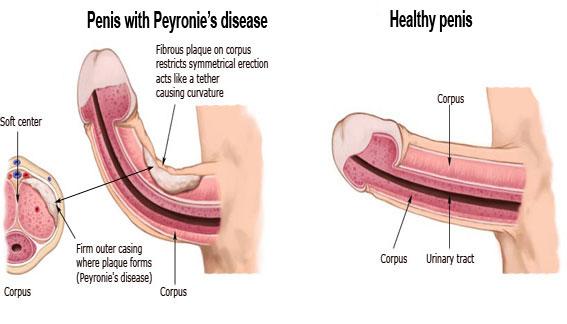
Signs and symptoms of Peyronie's disease may appear suddenly or develop gradually. The most common signs and symptoms include:
- Scar tissue - the scar tissue (plaques) associated with Peyronie's disease can be felt under the skin of the penis as flat lumps or a band of hard tissue.
- Significant bending of the penis - the penis might be curved upward, downward or bent to one side. In some cases, the erect penis might have narrowing, indentations or an hourglass appearance, with a tight, narrow band around the shaft.
- Erection problems - Peyronie's disease might cause problems getting or maintaining an erection.
- Shortening of the penis - the penis might become shorter as a result of Peyronie's disease.
- Pain - there might be pain in the penis, with or without an erection.
The curvature associated with Peyronie's disease might gradually worsen. At some point, however, it typically stabilises. Pain during erections usually improves within one to two years, but the scar tissue and curvature often remain. In some cases, both the curvature and pain associated with Peyronie's disease improve without treatment.
Your Urologist can assist with treatment including stretching devices, injections and vacuum erection pumps. Men’s Health Downunder can assist with these devices on your Doctor’s advice.
Shortened penis, also known as buried penis, is where the penis itself does not extend outside the body even though there is an opening where the penis would normally hang. In buried penis the glans, or head of the penis, is usually flush with skin of, or can even be retracted beyond, the pelvic tissue. Generally it happens gradually and can be a side effect of large weight loss or surgery which sees the penis retract.
The complications of a buried penis generally present as difficulty urinating both sitting and standing, inability to have intercourse and infection.
Where desired by the patient and with a referral from a general practitioner, a Urologist may be seen to discuss a surgical fix.
The main complication of buried penis beyond urination generally relates to hygiene and the possibility of infection developing. As the skin around the penis may be often be damp and warm it is an ideal site for fungal infection and/or lichen sclerosus.
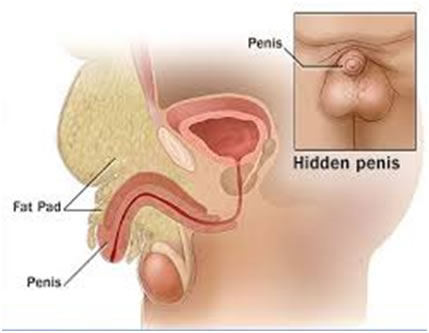
- Fungal infections may cause the skin to break down, become itchy, red, inflamed, flaky and sore. Fungal infections are easily managed with topical antifungals such as Canesten (see General Care Downunder below). It will require regular review and possibly semi-regular application of the antifungal cream/powder. It is important to keep the area as dry as possible.
- Lichen sclerosus is is the development of patchy, white skin that is thinner than normal; it can also make the skin look crinkly. This appears on the glans (head) of the penis and may lead to urethral stricture which further impacts on the patient's ability to urinate. Treatment of lichen sclerosus generally involves the use of a steroid cream (see General Care Downunder below).
Lichen sclerosus
- Lichen sclerosus, of which the cause is unknown, is is the development of patchy, white skin that is thinner than normal; it can also make the skin look crinkly. This appears on the glans (head) of the penis and may lead to urethral stricture which further impacts on the ability to urinate. It is likely to increase the risk of the skin breaking; this is painful and may affect your ability to have and/or enjoy sex.
- Lichen sclerosus is not contagious or sexually transmitted and is diagnosed by sending a biopsy for pathology. It can also occur on the female genitalia and around the breasts and anus.
- Because it can appear white and itchy it can be misdiagnosed as thrush so it is important to speak with your Doctor if it is not improving.
- The mainstay of treatment involves the use of topical steroids and they work relatively well. Topical steroids can be prescribed by your Doctor or purchased without a prescription from your Pharmacy. As a last resort, surgery can be performed however this is not without risks
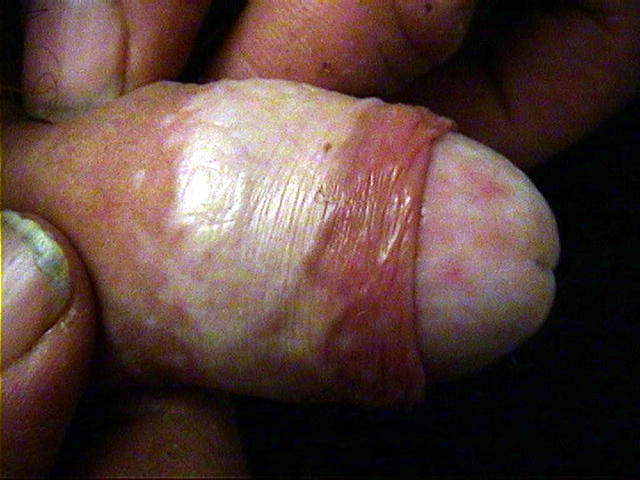
Candida/thrush
- Thrush is an overgrowth of a fungus and is also known as a yeast infection. The causative fungus, called Candida, normally does not cause any problems because it is kept under control by the immune system and by other bacteria and viruses in the body. However, some factors such as skin irritation, taking antibiotics, poorly controlled diabetes or an area of skin which gets warm and moist (such as the genital area) can allow fungi to grow and multiply, which can lead to an overgrowth which we notice as symptoms
- The most common symptoms are an itchy, red, and sore head of the penis (glans), small red spots on the head of the penis (glans), discharge from the penis, pain when passing urine, difficulty pulling back the foreskin and a 'cheese-like' substance that smells yeasty and sometimes collects under the foreskin. Cracking and inflammation of the foreskin can also occur
- Medical treatment generally includes management with antifungal creams such as Canesten, powders such as Daktarin (useful because they tend to keep the skin dry) and even use of the oral antifungals. Your Pharmacist can assist with these treatments
- Non medical treatments include keeping the area dry, allowing airflow, and good hygiene
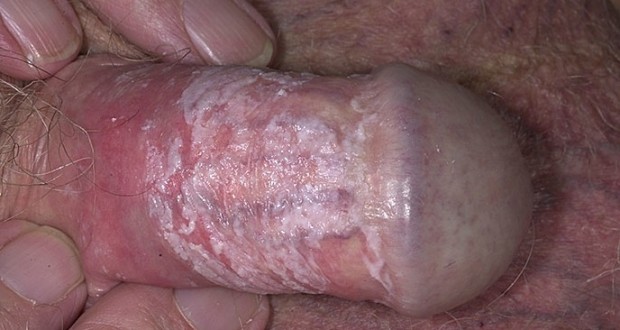
Chafing
- Chafing of the groin generally occurs if you are an exercise enthusiast, or if you are overweight. Chafing is the annoying and often painful result of skin rubbing against skin or clothing. It can occur anywhere on your body, but the thighs, groin, underarms and nipples are particularly vulnerable. There are a number of ways to prevent skin chafing and prevention is better than treatment.
- Preventative measures are based around reducing friction and include:
- Staying dry with the use of powders such as talcum or alum powder
- Lubricating with petroleum jelly in high risk areas
- Dressing appropriately where possible with moisture-wicking synthetic fibres. Compression shorts are also useful. Avoiding clothes with seams is also a good idea
- Treatments include cleaning then applying petroleum jelly or similar products to the affected area. In cases where the skin is very painful, swollen, bleeding, or crusted seek further advice from your Doctor or Pharmacist
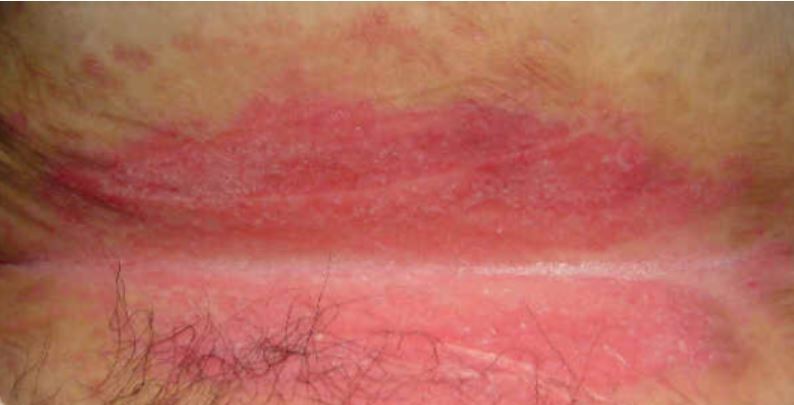
Psoriasis
- Psoriasis is a long-term skin condition that can also affect joints. Although the cause of psoriasis is unknown, it is thought that psoriasis occurs in people who have a genetic tendency for the immune system in their skin to react to certain triggers
- The most common symptoms are dry, raised, red patches of skin (plaques) covered with silvery scales. The patches usually appear on the knees, elbow and scalp, but they can appear anywhere on the body including the groin. Psoriasis can also cause dents and discolouration of the nails
- There is no cure for psoriasis but there are many treatments that can help to keep it under control. Mild psoriasis is usually treated with products applied to the skin. These include moisturisers, coal tar preparations, dithranol, corticosteroid creams or ointments and vitamin D preparations. Ultraviolet light therapy is another option that your Doctor may consider. If the psoriasis needs stronger treatment your Doctor may prescribe oral medications or injected medications

Pubic Lice
- Pubic lice, or crab lice, infest pubic hair. They can also infest the hair of the armpit, eyebrows, eyelashes, beard and torso. The infection is also called pediculosis pubis and the lice are called Phthirus pubis. Pubic lice are small, flat, light-brown parasites that cling to pubic hair and suck blood for nourishment. Blood sucking from pubic lice can cause small red areas or sores and itching. Pubic lice are usually transmitted through direct skin-to-skin contact during sexual activity. However, they can also be spread by contact with towels, undergarments and bedding of an infected person. Lice infestation causes no serious harm, but can be irritating
- Applying topical creams or lotions containing permethrin such as Lyclear or Quellada to the whole body from neck to toes is the most commonly recommended treatment. For advice on appropriate use of these treatments speak with your Pharmacist
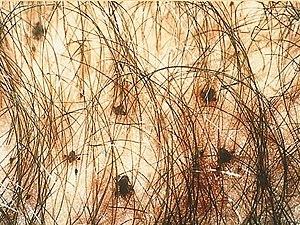
Sexually transmitted infections
- Sexually transmissible infections (STIs) are common all around the world. They may be caused by bacteria, viruses or parasites. You may think that only other people get STIs and that you are not at risk of catching one, but anybody who is sexually active can get an STI if they do not practice safe sex. You can’t tell just by looking at a person that they have an STI. If you have unprotected sex with a person who has an STI, you are at high risk of catching that infection.
- Sexually transmissible infections include, among others, chlamydia, herpes, gonorrhoea, syphilis, Mycoplasma genitalium, genital herpes, scabies, pubic lice (crabs), hepatitis and HIV.
- If you think you have been exposed to an STI, talk to your GP or sexual health service about having a check-up, even if you do not have any signs or symptoms. Don’t try to diagnose symptoms yourself, and remember that not all genital signs and symptoms are caused by an STI.
- For more information see https://www.betterhealth.vic.gov.au/health/conditionsandtreatments/sexually-transmissible-infections-stis
Step by Step Vacuum Therapy
-

Step 1:
Attach the pump head to the penile tube. The pump head will look different depending on whether it’s with a manual or battery operated system.
-

Step 2:
Place the loading cone on the other end of the penile tube
-

Step 3:
Slide a tension ring over the top of the cone and down just past the base of the cone, on to the edge of the penile tube.
For your first time, we recommend using the tension ring size that’s in the middle. If the ring is too tight, you can move up to a larger size. And if your erection doesn’t last as long as you’d like, you can move down to a smaller size.
To slide the tension ring down to the base of the cone, place the middle ring over the top of the cone and use the two handles to move downward. Feel free to use lubricant if you need to.
-

Step 4:
Once the tension ring is securely on the penile tube, remove the cone.
-

Step 5:
Insert the bushing into the same end of the tube where you just removed the cone.
-

Step 6:
Apply lubricant to the bushing, the inside of the penile tube and the pubic area.
-

Step 7:
Place the lube-side end of the penile tube over your penis, being sure to hold the tube firmly to create a tight seal against your body.
-

Step 8:
Begin engaging the pump. For motor systems, you’ll press the red button. For manual systems, you’ll pull the handle. In both cases, the pump will begin drawing blood into your penis, forming an erection.
-

Step 9:
Once you’ve achieved the desired erection, slip the tension ring off the end of the penile tube and on to the base of your penis.
Step 10:
You now have a firm erection that will last for 30 minutes!
